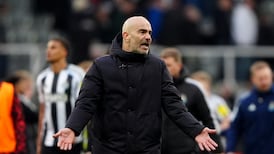GAA INTERNATIONAL RULES:THIS DAY three weeks sees the start of this year's International Rules series with the first Test in Limerick.
After the early years of the resumed project from 1998 to 2003, the international game has stalled, hitting new impediments of poorly-contested matches, violence and years when nothing has happened either because of unilateral withdrawal by the GAA or AFL and a new three-year cycle incorporating a gap year.
Pat Daly, the GAA head of games, believes the series continues to capture the interest of the public and says it’s too early to judge the impact of the shelving it once every three years.
“I think it’s developed a niche for itself, coming six weeks after the All-Ireland final and before the closing stages of the provincial club championships. I think we’ll be in a better position to judge when this year is over. When the series was held annually it had a certain momentum and maybe the gap year has slowed down the momentum – I’m not sure.”
One effect of the diminished frequency has been to reduce the numbers of seasoned internationals. In the early years after the series resumed in 1998 Ireland had a core of experienced footballers, such as current manager Anthony Tohill, Séamus Moynihan, Ciarán Whelan and Ciarán McManus, who played nearly every year.
“That’s true,” says Daly. “In the past you could have a guy playing in a number of different series, maybe through four, five or six years of it. You’d be lucky to emulate that now with the gap year reducing the series cycle to two in three years, but we’d have to look at a number of years to get an idea of the level of ‘churn’ under the current arrangement. But you’re not going to get the kind of perennial players we had before.”
On the positive side, there is greater familiarity with the game and greater knowledge of Australian Rules both because of the television coverage of the AFL season as well as the traffic in players from Ireland to Australia – and back again.
“The younger player today, at 25 or 26, has grown up with the international game,” according to Daly. “That wouldn’t have been the case when we were restarting the series in the late 1990s when players wouldn’t have been so aware of it.
“If you go back to ’98, Australia was still a pretty remote spot, but that sense of remoteness has gone with the improvement in modern communications, the internet and other technology, plus the fact that players from Ireland have been down there and that creates added awareness.”
Daly believes the series has been useful for the GAA and not just because of the international outlet it offers players and the promotional platform it provides for the association, but that it also enhances the technical abilities of Gaelic footballers.
“Obviously the skills aren’t all that different – you’re talking about catching, kicking and marking – but I think the real difference is on the technical side, the decision-making side. The speed at which decisions have to be reached in International Rules is a lot quicker than in Gaelic football. Adjusting to that is a major challenge for players and coaches.
“That’s why there’s a more rigorous effort in training to try to replicate the conditions of a match. A lot of the drills are decision-making drills with tackling built into that, because it’s hard to have an actual game that will recreate those scenarios.
“For instance, you call a colour and the player has to take the ball from one of three cones in different colours. He has two support players and three tacklers. You’re trying to replicate in the drills the scenarios you get in the game, because instinctively tackling isn’t part of our game.”
One of the more frequently voiced concerns in Ireland has been to do with the physical disparity between the countries’ players, accentuated in recent years by the evolving, full-time nature of the Australian game, which has given AFL players increasing advantages in physique.
Daly disagrees: “No, because the evolution of the Australian game has been away from the more physical, man-to-man marking to a more mobile, zonal system where players are more inter-changeable and operate all over the field. Our own game is moving in a similar direction with more and more teams operating a sweeper system and two-man full forward lines.”
The Australian team arrive in Ireland tomorrow fortnight. They will play a warm-up match in Páirc Uí Chaoimh on Wednesday, October 20th, against a combined UCC/UL team. The first Test follows on Saturday October 23rd, with the second a week later in Croke Park on October 30th.











